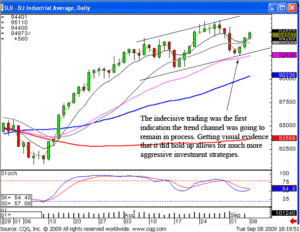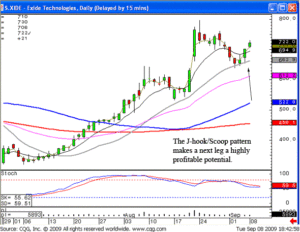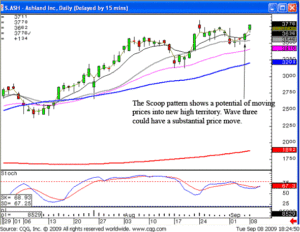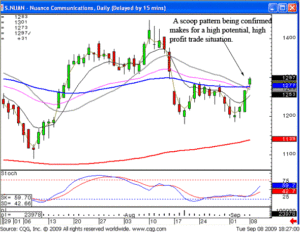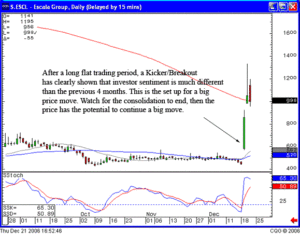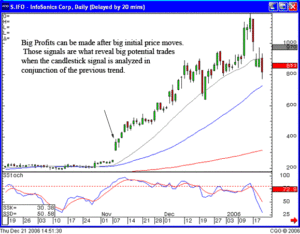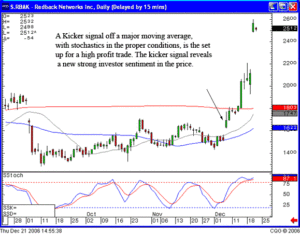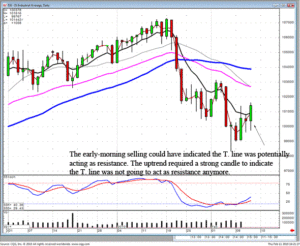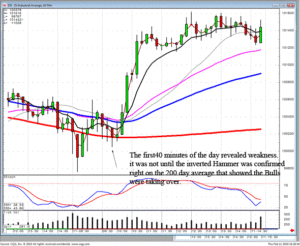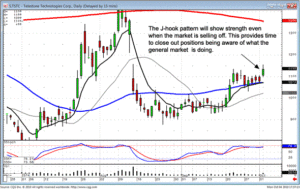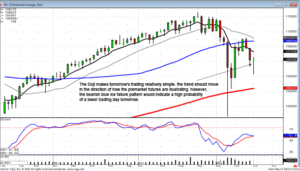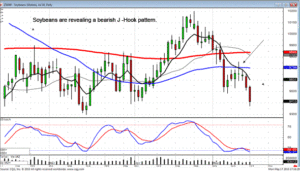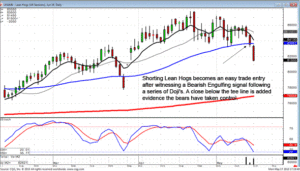The psychology of investing not only affects individual investors but also affects the market as a whole. Many investors often underestimate or are unaware of the affects that our emotions have on our return on investment. Many well educated and competent traders lose money due to trading anxiety and trading emotions. In today’s article we will discuss various emotions felt everyday by online stock investors and how each emotion affects trading decisions and trading performance.
The Psychology of Investing Emotions
Greed and Fear
Greed causes traders to buy at high prices or buy a large amount of the same share, therefore increasing risk. Fear causes investors to exit the markets too early causing a loss of otherwise attained profits. Traders suffering from fear are afraid that the price will decrease further so they get out before the timing is correct, instead of letting the trade play out.
Overconfidence
Traders who are overconfident tend to trade more rapidly and tend to overtrade. These traders lose money in commissions, taxes in addition to simply losing out on trades themselves due to the illusion of control. Greater participation in trading stock makes some traders feel more in control even though they are not. These traders also tend to invest in smaller and riskier companies and lack portfolio diversification.
Herding
The psychology of investing tells us that many investors tend to follow the crowd. They hear of hot stocks and they jump on the bandwagon only to lose money. What they fail to realize is that those stocks were hot until you and everyone else in “the herd” heard about them. Pass on these hot stock market picks. Even if they were money makers at some point, that time has passed. Find your own stocks to invest in based on your own proven research and analysis.
Confirmation Bias
Too often investors believe what they want to believe. We pay attention only to the information that supports what we believe, and ignore information that does not support what we “think we know.” Confirmation bias directly results in poor investment decisions and a loss of profits. An example of confirmation bias is when we become attached to a certain stock. Perhaps it performed very well in the past so we ignore all signs that it is currently not performing as well as it did and we invest anyway.
There are many factors to consider when studying the psychology of investing and how it affects stock traders everyday. Successful investors understand investment psychology and all it entails, they have determined their strengths and their weaknesses, and they proactively practice and develop the skills necessary to controlling their trading emotions so that they are successful in the stock market.
Learn more about Eliminating Emotions; The most profitable skill that can’t be taught!
Market Direction
“If this trading system works so well, why can’t I make money with it?” Have you ever asked yourself this question? It would seem logical that a proven trading technique should work for everybody all the time. What is the element that is different between somebody using a trading technique successfully and somebody else using the technique unsuccessfully? Emotions!
Being taught the mechanics of a successful trading program is fairly easy. Unfortunately, this education usually assumes investors will automatically implement the program based upon controlling their own emotions. Most trainings do not address this very important element of investing. Why? Because most investors want to hear how easy it is for them to make money with a new trading technique. They do not want to hear about the difficulties they will run into when utilizing any trading method.
A major facet of successful investing involves eliminating fear and greed from the decision-making process. This is the most difficult part of successful investing. Rational decision-making gets thrown out of the window when it comes to making investment decisions. Learning to control our emotions is the most difficult aspect of successful investing. We have to teach our own thought processes to respond completely different than the normal emotional reactions. Most investors do not even know they have to address this problem, let alone correct it.
Learning how to trade successfully is a two-part process. Implementing the correct executions based upon the information provided from your trading program and controlling your emotions while the trade is proceeding. Learning how to use candlestick analysis is easy. Learning to control your investment emotions becomes much easier when using candlestick signals correctly. The Candlestick Forum will be spending more time showing investors not only why and how candlestick analysis is profitable but also demonstrating what each investor needs to know about their own emotions to make investing successful. Look for the new e-book.
Does candlestick signals produce consistent profits? That may be a slightly different question than does candlestick signals consistently produce profits. Candlestick analysis is the proven investment technique that puts the probabilities of being in profitable trades in the investors favor. This does not necessarily mean the results are in a consistent style of return. It merely places an investors funds into situations where the probabilities are likely to produce a profit. This is why using a consistent money management system is important. Not every trade is going to work out as expected. There will be losses. However, based upon the results that candlestick signals have produced over the past 400 years, when all aspects of candlestick signals are in alignment, the total results should be a strong positive return.
This has been clearly illustrated in these market conditions. The morning and afternoon member commentary should have conveyed market conditions that are not overly bullish. Somewhat bearish as a matter of fact! But during the past few weeks, there have been excellent profits made by being in the correct sectors. The identification of these sectors were strictly due to the information illustrated from strong candlestick buy signals. The shipping sector and the mining sector have produced excellent profits over the past few weeks.
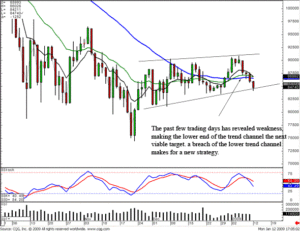
DOW
Candlestick signals and patterns are created by investor sentiment. Candlestick price patterns reveal information that most investors overlook. Common sense! A bullish price pattern developes for a certain reason. It becomes more pronounced when the general market conditions are bearish. Simple logic implies that if the general market trend is down and a price pattern in a specific stock is moving positive, buyers are entering that position with the knowledge the rest of the market is selling off. EYE is a perfect example of utilizing a price pattern, a Fry Pan bottom. This candlestick pattern clearly illustrates bullish sentiment coming into the stock price. This was occurring when the Dow could clearly be seen as in a negative trend. The Candlestick Forum recommended this position based upon what the pattern was revealing. Was there any knowledge that a buyout bid was in the making? Definitely not! Unless any of us have an extensive research department to monitor each and every opportunity in the market, the best strategy is to use a trading technique that reveals what other investors are doing, Candlesticks!
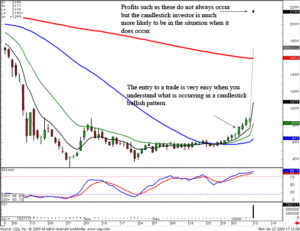
EYE
EYE produced better than 150% return in a three-day period. Obviously, this does not happen all the time. The important fact is that the candlestick signals/patterns allowed for the analysis of the possibility of a big price move. Having the good fortune of being in the right place at the right time is a result of the probabilities created by these patterns. It does not take a large number of situations such as this to produce a much better return annually than other trading programs.
Learn how to use candlestick signals correctly. The proper use of money management and emotional control produces a much greater potential result than any other trading program available.
Chat session tonight for members 8 PM ET.
Good investing,
The Candlestick Forum Team
Online Training Sessions with Stephen Bigalow
Now Scheduling for
January 24th & 25th, 2009
Click here for details
Group size is limited; Sessions fill quickly – Pre-register early
This Week’s Special – NEW RELEASE!
Stephen Bigalow’s latest ebook on Eliminating Emotions retail price of $129 reduced to $69 for our Introductory Special Price to Newsletter Subscribers
Click here for more details
Website special reflects current newsletter. If you are reading an archived newsletter you will be directed to Current Website Special.
